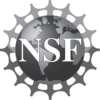Nonscientists should take part in discussions about research priorities and more. This article, Citizen Science Isn’t Just About Collecting Data, originally appeared in Slate AUG. 15 2016 7:31 AM.
The earthquake near Washington, D.C., five years ago in August 2011—the one that damaged the Washington Monument and the National Cathedral but had little other noticeable impact—caught me by surprise. Sitting in an office on the 12th floor of a building downtown, I thought it might have been an improbably large truck on the street below, until a co-worker suggested we probably ought to leave the building. We spent the rest of that sunny afternoon milling around with other office workers before calling it a day and heading to happy hour.
What I did not do, but really wish that I had, was enter a description of my experience into the U.S. Geological Survey’s crowdsourcing initiative, Did You Feel It? The system collects data from people who have felt tremors to determine the extent and intensity of earthquakes in near-real time. The submitted data are used in the USGS ShakeMaps, which help organizations like the Federal Emergency Management Agency prepare for and respond to earthquakes.

